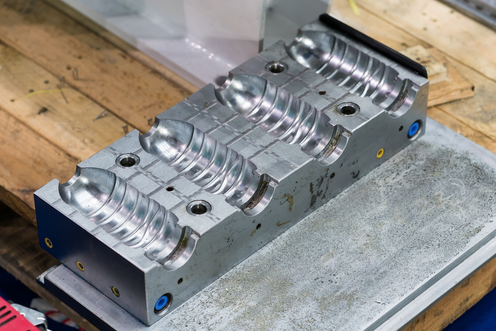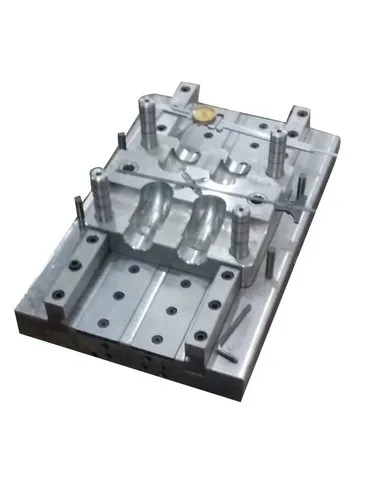PVC (Polyvinyl Chloride) molding is widely used in manufacturing due to its versatility, durability, and cost-effectiveness. However, like all manufacturing processes, PVC molding can sometimes result in defects that affect the quality of the final product. Understanding these common defects and how to prevent them is crucial to ensuring high-quality production and reducing waste.
1. Short Shots
Definition: A short shot occurs when the mold cavity does not fill completely with PVC material, resulting in an incomplete or underfilled part.
Causes:
Insufficient injection pressure or volume.
Low melt temperature of PVC.
Clogged or improperly sized sprue or runner.
Inadequate venting of the mold.
Prevention:
Increase injection pressure or shot size.
Ensure the correct melt temperature for the PVC material is reached.
Regularly check and clean the sprue and runner systems.
Optimize the venting of the mold to allow air to escape and prevent trapped gas.
2. Flash
Definition: Flash refers to excess material that escapes from the mold cavity, usually at the edges of the part or in the form of thin layers of plastic.
Causes:
Excessive injection pressure.
High melt temperature.
Poorly maintained or worn mold components.
Improper clamping pressure.
Prevention:
Adjust the injection pressure to the correct level for the part.
Maintain a proper melt temperature to avoid over-extrusion.
Regularly inspect and replace worn mold components, particularly the mold halves and seals.
Optimize clamping pressure to ensure the mold is held tightly together during injection.
3. Warpage
Definition: Warpage is the distortion or deformation of a part after it has been molded, usually caused by uneven cooling.
Causes:
Uneven cooling rates across the part.
Incorrect mold design.
Non-uniform material flow during injection.
Prevention:
Optimize the mold cooling channels to ensure consistent cooling.
Consider the part geometry and design a mold that promotes uniform cooling.
Use molding simulations to analyze material flow and temperature distribution.
Maintain consistent processing parameters such as injection speed and pressure.
4. Sink Marks
Definition: Sink marks are small depressions or indentations that appear on the surface of the molded part, often near thicker sections.
Causes:
Insufficient packing pressure.
High cooling rates leading to uneven material shrinkage.
Thick sections in the part.
Prevention:
Increase packing pressure to ensure the mold cavity is filled evenly and completely.
Adjust the cooling rate to reduce material shrinkage and ensure uniform cooling.
Avoid excessive part thickness and use uniform wall thickness when designing parts.
Use a gate location that minimizes the thickness variation of the part.
5. Surface Imperfections (Orange Peel)
Definition: The “orange peel” defect refers to a rough surface texture that resembles the skin of an orange, which can occur on PVC molded parts.
Causes:
High injection speed or pressure.
Too high or low melt temperature.
Improper mold surface finish or contamination.
Prevention:
Adjust the injection speed and pressure to avoid over-stress on the material.
Maintain the proper melt temperature for PVC to ensure smooth flow.
Regularly clean and maintain the mold to ensure there are no surface contaminants.
Opt for the right mold surface finish based on the part’s application to avoid surface imperfections.
6. Cold Slugs
Definition: Cold slugs are pieces of solidified PVC that enter the mold cavity, often causing defects or material clogs.
Causes:
Low melt temperature of PVC.
Inadequate barrel or nozzle heating.
Delayed injection start, causing partial solidification of PVC before injection.
Prevention:
Ensure the PVC material is heated to the correct melt temperature before injection.
Check that the barrel, nozzle, and mold are properly heated and insulated.
Use proper injection timing to avoid the premature cooling of PVC in the injection system.
7. Bubbles or Voids
Definition: Bubbles or voids are air pockets or gas bubbles trapped inside the molded part, which can affect the strength and appearance of the part.
Causes:
Trapped air in the mold cavity due to improper venting.
Use of incorrect PVC formulations or additives.
High moisture content in the PVC material.
Prevention:
Ensure that the mold is adequately vented to allow air to escape during injection.
Dry PVC material thoroughly before molding to avoid moisture-related defects.
Use the right PVC formulation for the application and avoid excessive use of additives that can cause outgassing.
8. Mold Wear and Tear
Definition: Mold wear and tear occurs as the mold components degrade over time, affecting the quality and consistency of molded parts.
Causes:
Repeated high-pressure injection cycles.
Abrasive materials used in PVC formulations.
Poor maintenance or inadequate lubrication.
Prevention:
Implement regular maintenance schedules for molds to inspect and replace worn parts.
Use proper lubrication to reduce friction during the injection process.
Consider using hardened mold steels or coatings to reduce wear and extend mold life.
9. Degradation of PVC
Definition: Degradation refers to the breakdown of PVC material, which can cause color changes, brittle parts, or other performance issues.
Causes:
Overheating PVC during processing.
Exposure to excessive heat or moisture in the material.
Prolonged residence time in the injection barrel.
Prevention:
Monitor and control the melt temperature to ensure it does not exceed the recommended limits for PVC.
Avoid excessive material residence time in the injection machine.
Ensure proper storage of PVC material to prevent moisture absorption and contamination.
Conclusion
While defects in PVC molding can occur for a variety of reasons, many can be prevented by paying close attention to mold design, material handling, processing conditions, and maintenance. By identifying common defects like short shots, flash, warpage, and others, manufacturers can implement solutions to improve production efficiency, reduce waste, and maintain high-quality standards in PVC molded parts. Regular monitoring, optimizing processing parameters, and performing preventive maintenance on molds are crucial steps to achieving defect-free production.


